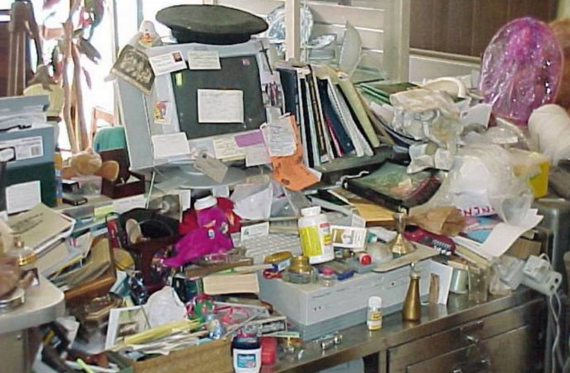Students: Are You Going Through “The Dip” Again? [Video]
“The Dip” is a completely predictable pattern for many outside-the-box students. Here’s how it goes:

🎦 YouTube: Visit my official YouTube channel here. Subscribe, like & comment to support my work. 👉 Share: To support me, please *CLICK* at the bottom to share on FB or Pinterest. ✏️ EF101: Here’s my jumpstart course for parents and teachers. 💚 Give: Love my work and want to donate? 🙏 Thanks! — Seth
- The semester starts strong. Organized, optimistic, ready.
- Classes seem to go well for a couple of weeks.
- A couple of things go wrong, but no cause for alarm. Maybe you forgot to study for a couple of quizzes, forgot to do some reading, forgot to do a couple of assignments.
- BAM! 6-8 weeks into the semester, everything suddenly falls a-p-a-r-t. Perhaps teachers just updated a bunch of grades and you have a bunch of 0s or late work. Maybe there was a daunting progress report or conferences that didn’t go well. Either way, grades took a nosedive!
- You spend the rest of the semester struggling to swim upstream or dig yourself out of a pit.

🎦 YouTube: Visit my official YouTube channel here. Subscribe, like & comment to support my work. 👉 Share: To support me, please *CLICK* at the bottom to share on FB or Pinterest. ✏️ EF101: Here’s my jumpstart course for parents and teachers. 💚 Give: Love my work and want to donate? 🙏 Thanks! — Seth
Video transcript:
Hey, what’s up? What’s up? What’s up for? What I, this video is for you students. This is general for middle high school and college students. And this is about the dip and this is something that I talk a lot about right now. It’s the end of February and that means that it’s basically close to the middle of the semester of second semester in a school year and often times at this point in time students go through the debt. Usually six to eight weeks into any given semester students who are not the best student go go through the dip and what the dip is is the dep is this time when you start off your semester and everything is going strong and then a few weeks into the semester things start to get a little bit weird things might be really high really low really high. I mean things to start to get all over the place. The thing is is that at the beginning of the semester you start off strong you have all A’s and B’s you’re getting everything in generally if you’re watching this video. You’re you’re probably a good starter. It’s the finishing that’s difficult is to follow through and finishing off the semester. So lot of my students will do really well and then something happens right about here six to eight weeks in teacher start to get a bunch of grades in let’s say that you turn in stuff lay their entering those grades or that they do you have a couple of zeros there a teacher’s or entering a bunch of old grades and all of a sudden Boom the dip happens. Everything goes downhill. You might have a big little dip here come back. Boom. Boom. Boom by the centrally everything falls to Pieces all your A’s and B’s just go boom and turn into C’s D’s and ask it can happen really fast all of a sudden 8 weeks in or right now the end of February if you were to look at your grades today, you might see holy cow you have for a stand to a pluses or some crazy combination score. So this is very very very very, Very, very predictable pattern of question is what do you do about it? Well, there are three things to do about it one. Nothing keep avoiding keep procrastinating keep telling yourself. You don’t feel motivated to keep making excuses stay in the dep avoid avoid avoid and you will end up with low grades at the end because it will you will lend a hand to pull it together. But if you don’t do it, it’s not going to happen automatically next thing, you know, it’s a week before the end of the semester and you try to pull it together, but when the actual report card comes and it’s summertime, it’s too late and you have a bunch of apps you have to retake classes go to summer school or whatever. To you work to dig yourself out of the hole. You start swimming Upstream. You start doing what you can sometimes but you aren’t consistent enough to really pull it together in the end up with a bunch of mid-range gray the bunch of seize or you might have an affinity in a couple days and B’s and C’s sort of your averaging mid-range. And then the third thing that can happen is that you really dig yourself out of the pit You Really Turn Around you like I’m not going to let this happen and that’s why I’m making this video. Now the dip is happening. Now if you address it right now today and you start doing good things for yourself. You will make it much much much easier to end up with all A’s and B’s and with actually not very much effort. It really believe it or not doesn’t require much more effort to get your A’s and B’s then you’re probably putting it already but it does require a few things. I’m going to be a give you a couple of ideas that are going to help you and it is if you want to turn Brown you will not be taking yourself out of a giant hole and you want to not swim upstream the whole rest of the semester and you want to make it much easier on yourself Harrison tips, that will help you number one. Immediately in you’re not going to want to do that. Some of you are not going to want to do this advocate for yourself connect with your teachers. Sit down today. Look at your grades write an email your teacher say hey, what’s up, it’s me, Seth or whoever you are. Look I’m getting a c in your class or D or an F. I want to do while my goal is to get whatever if you want to get in there be telling your goal. My goal is to get whatever and can I meet with you during office hours this week or do you have a suggestion for me or what can I do to bring my grade up? I don’t want to be digging myself out of a hole the Restless Messer be honest connect again many of you are going to want to resist and here’s what you’re going to say. How do I know you’re going to say it? Cuz a lot of my students say it all the time. Well, I’ll just talk to them when I see them in class. Bologna, do not lie to yourself. I have been doing this a long time. I work with all kind of students. I get to students I get the ones that say well, I’ll just talk to him when I see him in class and they don’t then I asked him a couple days later. They say no I forgot but I’ll do it tomorrow then they don’t don’t lie to yourself just do it. And then I get the type of student who says okay Seth. I’ll email them and they email them and trust me at work teachers respect us connect with your teachers now today. Don’t wait just do it till your grades and connect them. It says a lot. To overhaul bring home every single paper from your locker your desk, whatever every book ever gum wrapper everything wrote in your backpack cramp in your backpack. Bring home everything from school every molecule of anything that has to do with school. Bring it home dump it on the floor and overhauling go through all of it for recycle papers. You don’t need archive papers. You may need make a pile of papers you need to either turn in or finish and then turn in and then put the things in the folders that you need to keep in your folders get reorganized completely overhaul your backpack your books and everything reset. It’s like resetting your computer resetting the modem do an overhaul a reset and do that today or tomorrow or the next day like just get everything and get it done and you should probably do that every two weeks by the way from now on through the rest of the school year. Trust me that will help a lot just going through something. Here’s what happens when my students Call everything we start going through the papers looking at stuff and then they say something like this. Oh, that’s where that is. I’ve been looking for that. Yeah. I have a zero on that. I thought I turned it in or something like that. So do the overalls. 3 sacred study space if you’re studying on the couch one day and bad one day at the desk one day of the kitchen table one day stop pick a place and create a place to study that is sacred a place that you do not put junk on you do not mess with you don’t put laundry on it. You don’t put a bunch of things that don’t have anything to school at a place for you to study. You want your brain to associated with studying and not other things when you’re not studying you want to be free. You want to enjoy your life you want to be present for whatever the things are that you enjoy not thinking about school and when you’re thinking about school and studying you want to just do that. Okay, so I see a lot of people who take an hour’s worth of homework and turn it into four hours because they screw around a lot and they don’t have a good safe and study face. So next make a sacred study space a good spot in your house or wherever to study that, you know is distraction-free. Make a routine. You don’t have to follow the routine. That’s the trick of the routine. But if you think that it is best for your brain to focus on homework from 4 to 6:30 p.m. Make a routine post it put it up on the wall. So you remember what routine you wanted to do if it’s good for you to study from 8 to 10 p.m. I don’t care what it is just be honest with yourself and make a routine when you’re not routine you tend to get more discombobulated more forgetful you lose track of details. So just try your best to make everything doesn’t have to be perfect and you don’t even have to always follow it make it consciously make it. finally prioritize look What’s the priority you creating? Awesome future for yourself creating an awesome life for yourself. You are the priority K prioritize delete the stupid video games from your computer throw away the Xbox get rid of the TV. Whatever is distracting you get Facebook off your phone. I don’t care what it is. It’s for you like get rid of things that are not priorities that are distracting you from creating an awesome life now and in the future, there’s a lot of distractions in our world, okay? Prioritize prioritize yourself in and just be like I’m not going to I’m not going to allow that it to interfere with my life and get rid of it. Okay. Last time it played a video game was literally 13 years ago. The reason I don’t play them is because I don’t just play one video game. I sit there and play and then 3 hours later I go where did that three hours ago and during that time and would just one more game just one more games just like look I got rid of them for my life. I don’t want them. They interfere with my life. I don’t have cable TV because I don’t because if I have it I watch it and I don’t really watch I just flipped channels. Like I know myself get to know yourself be very honest or something get rid of the Clutter from your life. Whether it’s Electronics weather toxic people in your life. I don’t care what it is prioritize you and having a great future where you can contribute to the world and bring your skills and your gifts in your awesomeness to the world to do some good. Okay. Get rid of those toxins. All right have an awesome day get to it. You’re probably in the dip right now. Get out of the dip do few things for yourself that’s going to make that happen and have an awesome week. I’ll see you soon.


